 https://sosny.com/wp-content/uploads/2025/08/Meeting-with-client-over-video-call.jpg
1250
2000
Abstrakt Marketing
/wp-content/uploads/2024/04/SOS-Logo-Color-New.png
Abstrakt Marketing2025-07-25 20:42:432025-10-24 20:30:15How VoIP Collaboration Enhances Communication Between Clients and Teams
https://sosny.com/wp-content/uploads/2025/08/Meeting-with-client-over-video-call.jpg
1250
2000
Abstrakt Marketing
/wp-content/uploads/2024/04/SOS-Logo-Color-New.png
Abstrakt Marketing2025-07-25 20:42:432025-10-24 20:30:15How VoIP Collaboration Enhances Communication Between Clients and TeamsThe Disadvantages of On-Premise Phone Systems: Why It’s Time to Switch to VoIP
Many businesses still cling to outdated communication methods without realizing the hidden risks. On-premise phone systems, though once considered the gold standard, have become cumbersome and costly to maintain. By recognizing the drawbacks of on-premise solutions, decision-makers can make a more informed choice about upgrading to VoIP for greater efficiency, scalability, and security.
Understanding On-Premise Phone Systems
On-premise phone systems rely on hardware physically located in an organization’s office or data center. Known as Private Branch Exchange (PBX) systems, these setups historically offered businesses in-house control over their telecommunications. However, as technology has advanced, these older systems have failed to keep pace with modern demands. They typically involve large upfront investments in equipment and ongoing maintenance.
As more companies embrace remote work, scalability, and flexible workflows, on-premise solutions have grown increasingly outdated and less capable of meeting the fast-evolving needs of today’s competitive market.
The Main Drawbacks of On-Premise Phone Systems
Despite serving businesses for decades, on-premise PBX systems now present substantial challenges that can hamper overall growth and efficiency. High maintenance expenses, inflexible hardware, and security vulnerabilities can put organizations at risk. Below are some of the major issues companies face when they rely on on-premise phone systems in a world quickly shifting toward cloud communications.
Vulnerability to Cyber Threats
While businesses often assume having on-site equipment offers more control, on-premise phone systems can expose organizations to a range of cyber threats if not diligently secured and updated. Hackers can exploit vulnerabilities in legacy hardware or software, potentially accessing call records, voicemail data, or confidential company information.
Outdated firewalls and security protocols may not be robust enough to prevent modern phishing or denial-of-service attacks. Unlike cloud-based providers who continuously patch and monitor their networks, businesses with an in-house PBX system must shoulder the security burden. Failure to keep up with security patches and system updates can result in costly data breaches, eroding consumer trust, and incurring regulatory fines.
Ongoing Maintenance Costs
On-premise PBX setups require a significant initial investment in hardware, cabling, and specialized IT support. Over time, these systems become costly to maintain, as businesses need to replace aging components, upgrade firmware, and troubleshoot hardware issues. Routine maintenance for on-premise solutions also demands internal expertise or third-party technical service calls—both of which add to operational expenses.
Scaling an on-premise system to accommodate new lines or advanced features often means purchasing additional hardware, further driving up costs. In contrast, businesses that switch to hosted VoIP often gain more predictable monthly expenses and can forego the need for on-site technical upkeep.
Limited Scalability
If your business experiences rapid growth or seasonal fluctuations in call volumes, an on-premise PBX can quickly become a bottleneck. Adding new lines usually involves purchasing additional phone ports and possibly even upgrading the entire PBX hardware to support higher capacity.
This scalability limitation can impede an organization’s agility, preventing quick adjustments to changing market conditions. Even if you only need a short-term increase in phone lines, you might be forced to commit to substantial capital outlays for new equipment. As a result, smaller or mid-sized businesses can find it difficult to compete with larger, more flexible rivals that have already switched to VoIP.
Lack of Flexibility and Mobility
Modern workplaces are no longer confined to a single physical location. Employees often work from home, travel for business, or collaborate with global teams. An on-premise phone system typically lacks the seamless mobility features found in cloud-based solutions. Remote workers face challenges when trying to access company phone lines or voicemail from outside the office.
Setting up advanced call forwarding, mobile apps, or unified communications tools can be complicated, if not impossible, without additional hardware or software modules. These limitations negatively impact productivity and hinder organizations from offering flexible work arrangements that many employees now expect.
Complex Upgrades and Feature Integration
Staying competitive requires regular technology enhancements. On-premise phone systems are notoriously hard to upgrade, and each new feature—whether it’s voicemail-to-email functionality, call analytics or video integration—requires on-site installations, software patches, and specialized expertise.
Adding a new feature can sometimes mean replacing outdated hardware entirely. These complexities translate into higher costs and extended downtime. As a result, many companies find themselves using obsolete communication features, putting them at a disadvantage in comparison to businesses with easy-to-update VoIP platforms.
Physical Risks and Downtime
Because on-premise equipment is typically housed in a single office location, businesses are vulnerable to local power outages, fires, or natural disasters. If the PBX server or critical hardware is damaged, phone operations could be disrupted indefinitely—potentially resulting in lost revenue and diminished customer satisfaction.
Companies relying on cloud-based systems can often route calls from alternate servers in different regions, significantly reducing downtime. On-premise systems rarely offer such redundancy without additional expensive infrastructure, making them less resilient in the face of unforeseen events.
Discover the key differences between hosted VoIP and on-premise phone solutions and find the best fit for your business communication needs today.
Cloud-Based Phone Systems vs On-Premise Systems
As on-premise phone systems grow increasingly outdated, cloud-based VoIP solutions have emerged as the modern alternative. These platforms route calls and host features through the internet, sidestepping many of the pitfalls associated with old-fashioned hardware. Here are some major differences:
- Deployment Model: VoIP is internet-based, whereas on-premise phone systems rely on physical PBX hardware housed in your facility.
- Scalability: Cloud solutions can easily add or remove lines on demand, while on-premise systems require hardware expansions.
- Maintenance: VoIP providers typically handle updates and security patches, while on-premise systems require hands-on oversight.
- Redundancy: Cloud systems often route calls from different server locations, whereas on-premise setups risk total downtime if equipment fails.
- Cost Structure: VoIP usually involves predictable monthly fees, whereas on-premise entails a high initial investment plus unpredictable maintenance costs.
- Mobility: VoIP makes remote and mobile access to business lines seamless, while on-premise systems can be cumbersome for off-site use.
Cloud-based VoIP solutions provide flexibility, scalability, and predictability that older phone systems can’t match, making them a more practical choice in an increasingly digital marketplace.
The Long-Term Benefits of Switching to VoIP
Migrating from an on-premise phone system to a cloud-based phone system isn’t just about staying current with technology. It’s about harnessing a powerful communication platform that can reduce costs, enhance collaboration, and scale effortlessly with your organization’s growth.
Let’s uncover the benefits of VoIP solutions over on-premise phone systems:
Consistent Cost Savings
Unlike on-premise solutions, which can demand large capital outlays for hardware and software, VoIP operates on a subscription or pay-as-you-go model. This structure eliminates the need to purchase and maintain extensive phone equipment in-house. Businesses also see reduced call charges, especially for long-distance or international calls. Over time, these savings can fund other essential investments, making VoIP an attractive financial decision.
Enhanced Security and Compliance
Leading VoIP providers are well-equipped to offer advanced security measures, such as encryption and multi-factor authentication, to protect voice data as it transmits across the internet. Many cloud telephony services adhere to strict compliance regulations, which is critical for sectors like healthcare or finance. This built-in security can be more robust than the patchwork measures often found in legacy PBX setups, granting peace of mind to organizations handling sensitive information.
Improved Productivity and Collaboration
VoIP solutions offer multiple communication channels—voice calls, video conferencing, and instant messaging—through one platform. Employees can switch between devices and locations seamlessly, streamlining teamwork and boosting efficiency. With features like call forwarding to mobile devices and unified messaging, teams can remain connected even when working remotely. The result is a highly collaborative environment that fosters rapid decision-making and responsiveness.
Future-Proof Technology
Technology evolves at lightning speed, and phone systems are no exception. Traditional PBX hardware can quickly become obsolete, forcing costly upgrades. VoIP services, by contrast, update features and functionality in the cloud. Users automatically benefit from software enhancements without requiring new hardware installations. This forward-thinking approach ensures your business has access to modern tools and remains competitive in an ever-changing marketplace.
Scalability on Demand
For startups and growing enterprises, the ability to adapt phone services to current demands is critical. VoIP makes scaling effortless: administrators can add or remove lines, voicemail boxes, and advanced features from an online dashboard. This level of control also extends to modifying call routing strategies, ensuring that a sudden surge in inbound calls doesn’t overwhelm your customer support team. The ability to scale up or down quickly keeps your operation lean, agile, and prepared for market fluctuations.
Upgrade From Your On-Premise Phone System With Superior Office Solutions
Clinging to an outdated on-premise phone system can put your business at a disadvantage. Transitioning to a cloud-based VoIP solution modernizes your communications and delivers many benefits, from streamlined maintenance to future-ready features. Superior Office Solutions understands the unique challenges of migrating away from legacy PBX systems and stands ready to guide you through the process.
Contact us today to learn how you can upgrade with minimal disruption, harnessing the full potential of modern VoIP technologies for a more resilient and efficient future.
Share This Post
More Like This
 https://sosny.com/wp-content/uploads/2025/08/Meeting-with-client-over-video-call.jpg
1250
2000
Abstrakt Marketing
/wp-content/uploads/2024/04/SOS-Logo-Color-New.png
Abstrakt Marketing2025-07-25 20:42:432025-10-24 20:30:15How VoIP Collaboration Enhances Communication Between Clients and Teams
https://sosny.com/wp-content/uploads/2025/08/Meeting-with-client-over-video-call.jpg
1250
2000
Abstrakt Marketing
/wp-content/uploads/2024/04/SOS-Logo-Color-New.png
Abstrakt Marketing2025-07-25 20:42:432025-10-24 20:30:15How VoIP Collaboration Enhances Communication Between Clients and Teams https://sosny.com/wp-content/uploads/2025/06/Business-person-with-phone-texting.jpg
1250
2000
Abstrakt Marketing
/wp-content/uploads/2024/04/SOS-Logo-Color-New.png
Abstrakt Marketing2025-06-24 14:24:562025-10-24 20:30:17How Business VoIP Texting Improves Customer Engagement and Sales
https://sosny.com/wp-content/uploads/2025/06/Business-person-with-phone-texting.jpg
1250
2000
Abstrakt Marketing
/wp-content/uploads/2024/04/SOS-Logo-Color-New.png
Abstrakt Marketing2025-06-24 14:24:562025-10-24 20:30:17How Business VoIP Texting Improves Customer Engagement and Sales https://sosny.com/wp-content/uploads/2025/05/Night-phone-call-and-mature-man-with-tablet.jpg
1250
2000
Abstrakt Marketing
/wp-content/uploads/2024/04/SOS-Logo-Color-New.png
Abstrakt Marketing2025-05-30 19:55:542025-10-24 20:30:18How Smart Call Routing Increases Business Efficiency
https://sosny.com/wp-content/uploads/2025/05/Night-phone-call-and-mature-man-with-tablet.jpg
1250
2000
Abstrakt Marketing
/wp-content/uploads/2024/04/SOS-Logo-Color-New.png
Abstrakt Marketing2025-05-30 19:55:542025-10-24 20:30:18How Smart Call Routing Increases Business Efficiency https://sosny.com/wp-content/uploads/2025/05/The-Revolutionary-Role-of-AI-in-Document-Management.jpg
1250
2000
Abstrakt Marketing
/wp-content/uploads/2024/04/SOS-Logo-Color-New.png
Abstrakt Marketing2025-05-12 15:20:162025-10-24 20:30:19The Revolutionary Role of AI in Document Management
https://sosny.com/wp-content/uploads/2025/05/The-Revolutionary-Role-of-AI-in-Document-Management.jpg
1250
2000
Abstrakt Marketing
/wp-content/uploads/2024/04/SOS-Logo-Color-New.png
Abstrakt Marketing2025-05-12 15:20:162025-10-24 20:30:19The Revolutionary Role of AI in Document Management https://sosny.com/wp-content/uploads/2025/05/Top-5-Industries-That-Benefit-Most-from-Business-VoIP-Texting.jpg
1250
2000
Abstrakt Marketing
/wp-content/uploads/2024/04/SOS-Logo-Color-New.png
Abstrakt Marketing2025-05-12 15:10:432025-10-24 20:30:20Top 5 Industries That Benefit Most from Business VoIP Texting
https://sosny.com/wp-content/uploads/2025/05/Top-5-Industries-That-Benefit-Most-from-Business-VoIP-Texting.jpg
1250
2000
Abstrakt Marketing
/wp-content/uploads/2024/04/SOS-Logo-Color-New.png
Abstrakt Marketing2025-05-12 15:10:432025-10-24 20:30:20Top 5 Industries That Benefit Most from Business VoIP Texting https://sosny.com/wp-content/uploads/2025/04/The-Transformative-Role-of-AI-on-VoIP.jpg
1250
2000
Abstrakt Marketing
/wp-content/uploads/2024/04/SOS-Logo-Color-New.png
Abstrakt Marketing2025-04-07 20:29:272025-10-24 20:30:21The Transformative Role of AI on VoIP
https://sosny.com/wp-content/uploads/2025/04/The-Transformative-Role-of-AI-on-VoIP.jpg
1250
2000
Abstrakt Marketing
/wp-content/uploads/2024/04/SOS-Logo-Color-New.png
Abstrakt Marketing2025-04-07 20:29:272025-10-24 20:30:21The Transformative Role of AI on VoIP https://sosny.com/wp-content/uploads/2025/02/Side-view-construction-texting-text-message-on-smartphone.jpg
1250
2000
Abstrakt Marketing
/wp-content/uploads/2024/04/SOS-Logo-Color-New.png
Abstrakt Marketing2025-02-25 14:59:292025-10-24 20:30:21Why Architecture Firms Are Switching to VoIP
https://sosny.com/wp-content/uploads/2025/02/Side-view-construction-texting-text-message-on-smartphone.jpg
1250
2000
Abstrakt Marketing
/wp-content/uploads/2024/04/SOS-Logo-Color-New.png
Abstrakt Marketing2025-02-25 14:59:292025-10-24 20:30:21Why Architecture Firms Are Switching to VoIP https://sosny.com/wp-content/uploads/2025/01/How-VoIP-Can-Streamline-Client-Communication-for-Law-Firms.jpg
1054
2000
Abstrakt Marketing
/wp-content/uploads/2024/04/SOS-Logo-Color-New.png
Abstrakt Marketing2025-01-23 14:10:502025-10-24 20:30:24VoIP for Law Firms: How to Streamline Client Communication
https://sosny.com/wp-content/uploads/2025/01/How-VoIP-Can-Streamline-Client-Communication-for-Law-Firms.jpg
1054
2000
Abstrakt Marketing
/wp-content/uploads/2024/04/SOS-Logo-Color-New.png
Abstrakt Marketing2025-01-23 14:10:502025-10-24 20:30:24VoIP for Law Firms: How to Streamline Client Communication https://sosny.com/wp-content/uploads/2024/11/Person-using-Teams-on-their-laptop.jpg
1250
2000
Abstrakt Marketing
/wp-content/uploads/2024/04/SOS-Logo-Color-New.png
Abstrakt Marketing2024-11-14 17:18:402025-10-24 20:30:26The Benefits of Teams and VoIP Integration for Small Businesses
https://sosny.com/wp-content/uploads/2024/11/Person-using-Teams-on-their-laptop.jpg
1250
2000
Abstrakt Marketing
/wp-content/uploads/2024/04/SOS-Logo-Color-New.png
Abstrakt Marketing2024-11-14 17:18:402025-10-24 20:30:26The Benefits of Teams and VoIP Integration for Small Businesses


